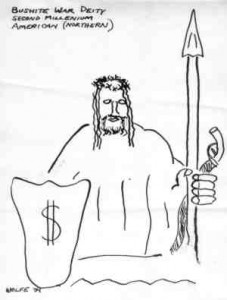Column by Hal Walter
Wildlife – January 2005 – Colorado Central Magazine
IN HEART OF THE GAME, Thomas McGuane wrote that hunting in your own backyard tends to become less and less and less expeditionary over time. This is especially true when you have permission to hunt the adjacent 2,500-acre land conservancy, and hold a license for a cow elk good for one regular season and then the entire month of December.
In such a situation, the home tends to take on the personality of a hunting camp. The rifle stands ready in the corner. A pack containing Zip-loc bags, knives, bone saw, minor survival goods like matches, and the grail-like piece of paper that permits you to do this, hangs from the knob of a closet door. The orange hat and vest remain on the truck seat.
The actual hunting takes place when you have the spare time, between jobs and the day-to-day doings of life — an evening here, a morning there. Recently a friend who lives in the city told me how important his annual hunt has become because it gives him the chance to get out of town to camp and be close to nature. I don’t have that problem.
My larger dilemma is a nearly empty freezer. And so daily exercise excursions become scouting missions, as I run along the road looking for tracks. No trip to or from town passes without scanning the ridges for the telltale yellow-brown backs and tawny rumps. This is not about sport. It’s purely about meat; meat, and the desire to have some input in a reality-based food chain.
Since the birth of my son Harrison last spring, I’ve run up a $500 account — mostly in beef and pork products — with my organic farmer-friend Doug Wiley. “I am well aware of the protein needs of lactating mammals,” Doug once told me in reference to my wife’s recent voracious appetite. Doug also has vast experience with dairy cattle.
I’ve always known game meat to be the healthiest choice. Scientists know meat from animals that eat only forage contains a different fat profile than those raised on grain. Specifically, the ratio of omega-3 to omega-6 fats is higher and more in line with the evolutionary diets of humans who have eaten wild game for millions of years.
Furthermore, after reading the titles of scientific papers like “Aerobic Digested Municipal Garbage as a Feedstuff for Cattle” and “Efficacy of Plastic Pot Scrubbers as a Replacement for Roughage in High-Concentrate Cattle Diets” (I am not making this up — both are actual scientific studies published in the Journal of Animal Science), I have made an even more concentrated effort to find protein from more natural sources. This at least partly explains my recent connection with Doug, and also my renewed interest in hunting.
I KNEW THAT THIS LATE in the season I’d be more likely to run into a large herd than a small group. Still, even in the absence of tracks leading to the timbered areas of the ridge southwest of my house, I stalked through the woods, and sat out on the icy ridgetop until darkness fell. The November season passed, and soon it was December.
Then one day they were just there. The elk, more than 50 in all, were spread out on the grassy south-facing ridge in the afternoon sun. There was no breeze and no sound other than the movement of the animals, including myself, a predator crawling through the crunchy snow.
I snuck up a small draw and then peered over the rise. Cows and calves grazed under the apparent supervision of a five-point bull less than 150 yards away. I am a better hunter than marksman. So it made sense to try to get even closer. A low outcrop of granite ran west, broken by the occasional mountain mahogany and piñon. I crawled through the frozen crust on my knees and left hand. The right arm was cramping to keep the rifle out of the snow.
AT LAST I RAN OUT OF ROCK and could go no farther. I was amazed that I had not been detected, though one cow was looking in my direction. I lay there on my stomach in the snow watching them all, looking for a cow that did not have a calf. It was the one staring at me.
There was a U-shaped groove in the rock. I placed one heavy fleece glove in it and then rested the rifle in this makeshift bench. When I looked through the scope and saw how thoroughly stable was the shot, I didn’t even think twice before touching the trigger. In the dead stillness I heard not the bang but rather the actual whiz of the bullet and a sickening smack.
The elk gathered in a big mass of brown shapes and began to slowly depart. I watched them for a while and they would not leave until I got up from the snow and walked over to see what I had done.
I found her in a patch of brambles, stretched out in a pile of broken branches and sticks. A wave of emotion — a combination of sadness and joy — rushed over me and I immediately gave thanks to the elk’s spirit, which I imagined to be hovering in the bright but waning winter afternoon. I bowed to the four directions of the wind, hoping for some breeze to carry this spirit on its way. The circle of life would be completed I promised this elk, as its flesh fed my own and that of my family.
THERE IS NO TELLING what gave me the idea that I could move something dead that outweighs me by more than a factor of three. But I tried. When it became apparent that my body was actually quivering from the effort, I gave up and set to work with my knife and bonesaw among the thorny currant bushes. By the time it was dark, the elk was gutted and steam rose from the chest into the frosty evening air.
This winter we have meat, and are thankful. Outside, a flock of chickadees has descended upon the ribcage skeleton hanging in a tree.
Hal Walter lives, writes, and hunts in the Wet Mountains.


